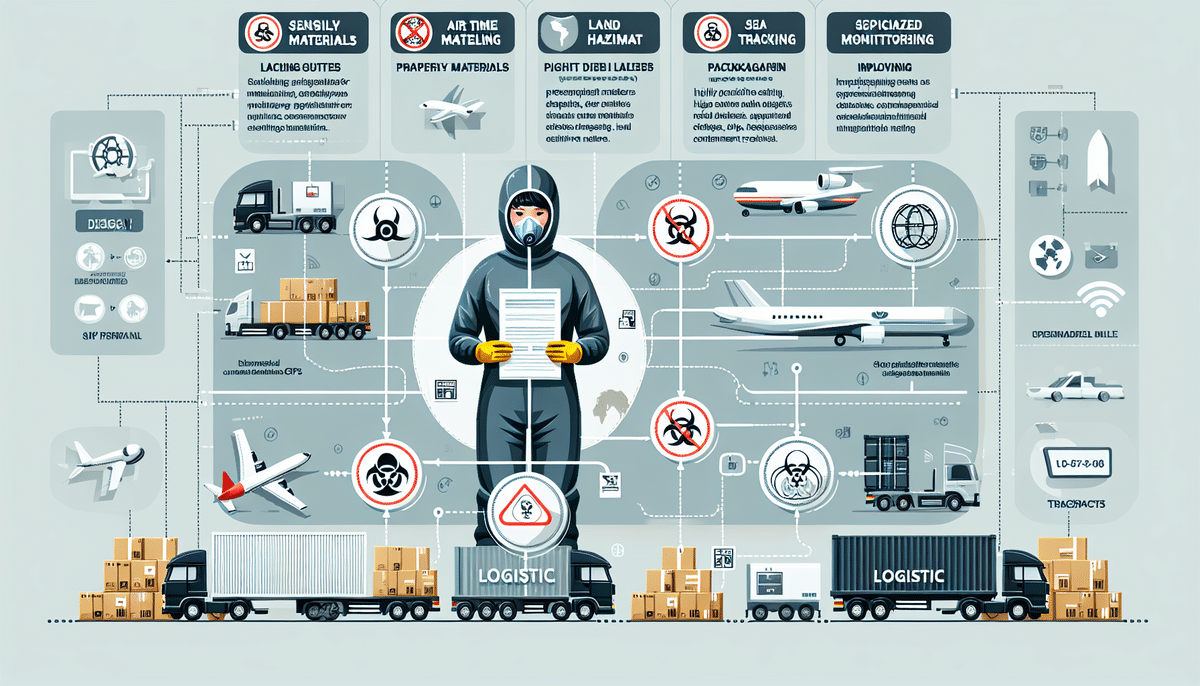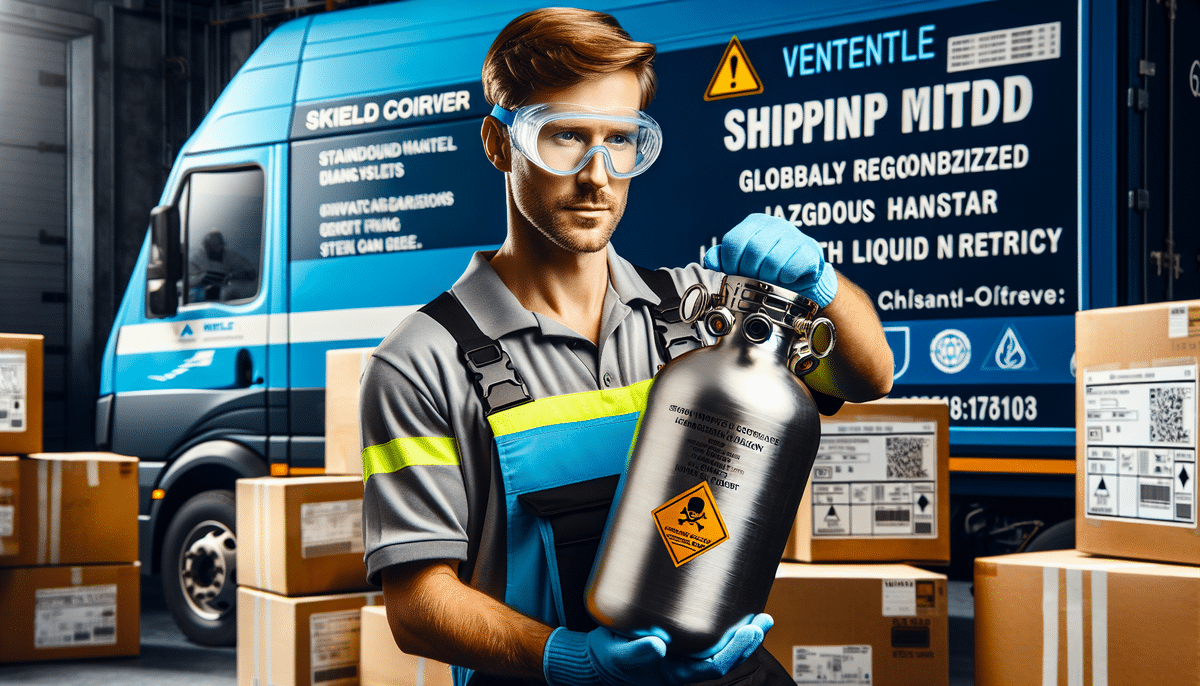FedEx Provides Guidelines for Shipping Items Containing Radioactive Materials
Shipping items containing radioactive materials demands meticulous attention to safety and regulatory compliance. As a leader in the logistics industry, FedEx offers comprehensive guidelines to ensure the safe and efficient transport of such materials. This article delves into FedEx’s protocols, incorporating the latest data and regulatory updates to provide a thorough understanding of the procedures involved in shipping radioactive materials.
What are Radioactive Materials?
Radioactive materials are substances that contain unstable atoms, which emit ionizing radiation as they decay. These materials can exist in solid, liquid, or gas forms and pose significant health hazards if not handled correctly. Radioactive materials are integral to various industries, including:
- Medicine: Utilized in diagnostic imaging and cancer treatment.
- Energy Production: Employed in nuclear power plants to generate electricity.
- Research: Used to study the properties of matter and develop new technologies.
While some radioactive materials occur naturally, such as radon gas—which can accumulate in buildings and pose health risks—many are man-made, resulting from nuclear processes or improper disposal practices.
Importance of Proper Handling of Radioactive Materials
Improper handling of radioactive materials can lead to severe health consequences, including cancer, skin burns, and even death. Ensuring the correct packaging, labeling, and transportation methods is crucial to minimize these risks. According to the U.S. Nuclear Regulatory Commission (NRC), adherence to safety protocols can significantly reduce the likelihood of accidental radiation exposure during transit.
Types of Radioactive Materials and Their Potential Hazards
Radioactive materials emit different types of radiation, each with varying levels of penetration and associated risks:
- Alpha Radiation: Cannot penetrate the skin but is harmful if ingested or inhaled.
- Beta Radiation: Can penetrate the skin and cause tissue damage.
- Gamma Radiation: Highly penetrating, causing deep tissue and organ damage.
- Neutron Radiation: Extremely penetrating, capable of causing severe biological damage.
Beyond health hazards, these materials can also have detrimental environmental impacts if not properly contained and disposed of. Compliance with all relevant regulations is essential to safeguard both public health and the environment.
Federal Regulations on Shipping of Radioactive Materials
The Nuclear Regulatory Commission (NRC) oversees the safe handling, transport, and use of radioactive materials in the United States. Key regulations include:
- Proper Packaging: Containers must withstand transportation stresses without breaching.
- Labeling and Marking: Packages must display appropriate hazard labels and handling instructions.
- Licensing: Shippers must obtain necessary permits to transport radioactive materials.
Non-compliance can result in hefty fines, legal repercussions, and increased scrutiny from regulatory bodies. Regular inspections by the NRC ensure adherence to these guidelines, placing the onus on shippers to maintain compliance consistently.
FedEx's Role in Shipping Radioactive Materials
FedEx has established itself as a reliable partner for shipping radioactive materials by implementing specialized procedures and dedicated resources:
- Dangerous Goods Handling Department: A specialized team trained in managing hazardous shipments, including radioactive materials.
- Enhanced Safety Measures: Services such as GPS tracking, real-time emergency response support, and 24/7 customer service.
- Regulatory Compliance: Continuous collaboration with regulatory agencies ensures up-to-date adherence to evolving guidelines.
FedEx’s commitment to safety and compliance makes it a trusted choice for businesses requiring the transport of radioactive materials.
Understanding the Packaging Requirements for Shipping Radioactive Materials
Packaging radioactive materials involves stringent requirements to ensure safety during transit:
- Durable Containers: Must withstand impacts, temperature variations, and other transportation stresses.
- Radiation Shielding: Materials such as lead or tungsten are used to contain radiation emissions.
- Clear Labeling: Packages must display hazard labels indicating the type and level of radiation.
Additionally, comprehensive documentation detailing the radioactive material's source, activity level, and packaging specifications must accompany each shipment. Accurate documentation is crucial to prevent delays and avoid regulatory penalties.
How to Label and Mark Packages Containing Radioactive Materials
Proper labeling is vital for the safe transport of radioactive materials. Labels must be:
- Highly Visible: Positioned prominently on all sides of the package.
- Standardized: Use recognized symbols and color codes as per International Civil Aviation Organization (ICAO) standards.
- Informative: Indicate the type of radiation, activity level, and handling instructions.
For air transport, the International Air Transport Association (IATA) has specific regulations that must be followed. Ensuring compliance with these labeling standards is essential for the safety of handlers and the general public.
Best Practices for Transporting Radioactive Materials by Air, Land, and Sea
FedEx advocates for the following best practices to ensure the safe transportation of radioactive materials across different modes of transport:
- Specialized Carriers: Utilize carriers equipped to handle hazardous materials.
- Secure Packaging: Employ robust packaging solutions to contain materials effectively.
- Real-Time Tracking: Monitor shipments continuously to respond promptly to any issues.
- Frequent Safety Checks: Conduct regular inspections to identify and mitigate potential risks.
- Staff Training: Ensure personnel are well-trained in handling and responding to emergencies involving radioactive materials.
- Emergency Response Plans: Develop and maintain comprehensive plans to address potential incidents during transit.
Compliance with international regulations and clear communication with recipients are also crucial to facilitate the smooth and safe delivery of radioactive materials.
FedEx's Training Programs for Employees Handling Radioactive Materials
FedEx prioritizes the safety of its employees and the integrity of shipments by implementing robust training programs:
- Comprehensive Training: Employees receive in-depth education on the properties of radioactive materials and proper handling techniques.
- Ongoing Education: Regular refresher courses keep staff updated on the latest regulations and safety protocols.
- Expert Oversight: A dedicated team of experts provides guidance, conducts audits, and ensures adherence to safety standards.
These training initiatives ensure that all shipments are managed with the highest levels of safety and compliance.
Common Mistakes to Avoid When Shipping Items Containing Radioactive Materials
To ensure the safe transport of radioactive materials, avoid the following common mistakes:
- Improper Packaging: Using containers that do not meet regulatory standards can lead to breaches and radiation leaks.
- Incorrect Labeling: Failing to display appropriate hazard labels can result in mishandling and increased risks.
- Poor Staff Training: Inadequately trained personnel may not follow necessary safety protocols, leading to accidents.
- Non-Compliance with Regulations: Ignoring federal and international guidelines can result in penalties and shipment delays.
Accurate classification and identification of radioactive materials are paramount. Knowing the specific type and quantity of material being shipped, along with maintaining proper documentation, helps prevent legal issues and ensures the safety of all parties involved.
What to Do in Case of an Emergency During Shipping of Radioactive Materials
In the event of an emergency involving radioactive materials during transit, FedEx has established a robust response plan:
- Immediate Response Team: Rapid deployment of specialized personnel to manage the situation.
- Coordination with Authorities: Collaboration with local emergency services and health teams to contain and mitigate the incident.
- Mitigation Measures: Implementing strategies to prevent further radiation exposure and environmental contamination.
During such emergencies, it is crucial to follow instructions from the response team and authorities, which may include evacuation or sheltering procedures. Avoiding contact with spilled materials and maintaining a safe distance are essential safety measures. Prompt reporting of incidents ensures a swift and effective response.
Advancements in the Safe Transportation of Radioactive Materials by FedEx
FedEx continuously invests in innovative solutions to enhance the safety of transporting radioactive materials:
- Technology Integration: Utilizing advanced tracking systems and radiation detection technologies to monitor shipments in real-time.
- Packaging Innovations: Developing new materials and designs that offer superior radiation shielding and durability.
- Enhanced Training Programs: Incorporating the latest safety practices and regulatory changes into employee training modules.
These advancements reflect FedEx’s commitment to maintaining the highest safety standards and adapting to evolving industry requirements. By prioritizing research and development, FedEx ensures the continued safe and efficient transportation of radioactive materials.
Conclusion
Shipping items containing radioactive materials requires stringent adherence to safety protocols and regulatory guidelines to minimize risks to public health and the environment. FedEx provides comprehensive guidance and specialized services to facilitate the safe transport of these hazardous materials. By following FedEx’s outlined procedures—from proper packaging and labeling to employee training and emergency response planning—shippers can ensure compliance and safety throughout the shipping process.
For more detailed information and specific guidelines, visit FedEx’s official shipping policies or consult the U.S. Nuclear Regulatory Commission (NRC) for regulatory standards.




















